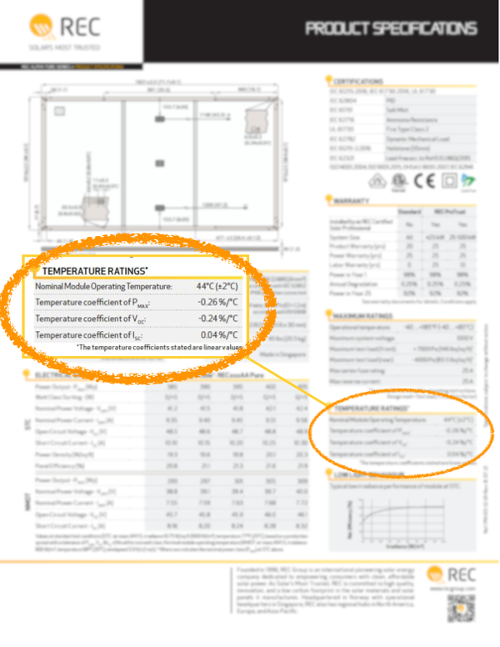The scene
You’re in the process of putting together a solar energy system. You’ve picked a brand of solar panel that will fit your needs, and have chosen a 150V MPPT charge controller to manage the battery charging. You’ve done the math: the solar panel you want has a Voc (open-circuit voltage) of 46.6V. So, you can put 3 of those in series on that controller…
3 x 46.6 = 139.8V
You’re wiring in series because your array is a fair distance from the controller/battery location and you’re wanting to keep the resistance losses in the wire to a minimum.
All good, right?
Unfortunately, no. This configuration has a problem, and unless you take one important factor into account, you will likely see the magic blue smoke come out of your charge controller one day in November.
Here’s Why
All solar modules perform better in the cold. Like a lot of electronic devices, semiconductors exhibit improved electrical characteristics when ambient energy isn’t interfering. In the case of a solar cell, which is effectively a diode, the voltage goes up as the temperature goes down.
Take a look at the spec sheet for the solar panel you have selected. You will see a series of “Temperature Coefficients” listed. One in particular pertains to Open Circuit Voltage (Voc).
In the example shown here (happens to be an REC 400M module), you see a coefficient of -0.265%/C. This means that you will gain 0.265% for every degree Celsius below the 25C that is used in the Standard Test Conditions (STC).

Doing The Math…
Outside temperature (historical low for your area) : -25C
Difference from STC : -50C
Temperature Coefficient (Voc) : -0.265
Voltage Rise : -50 x (-0.265) = 13.25%
This means that at -25C, your solar module’s Voc will be 13.25% higher. In this case, the 46.6V becomes 52.78V.
Now you see how stringing three of these modules in series will be trouble for the 150V charge controller. Remember, a solar module will reach its peak voltage very early in the daylight hours, long before it starts generating current.
Easy Math Tip
Multiply your solar panel’s Voc by 1.2 to get a quick estimate of what your cold-weather voltage could be, and whether you should re-think your array plan.
Not all solar panels are the same either. The better the manufacturer’s cell efficiency and chemistry, the smaller the temperature coefficient. This is very important, especially in the summer months when the opposite situation is happening. Just as the voltage rises and you ultimately get more power in cooler temperatures, when the cell temperature is over 25C, you begin to lose voltage and therefore power. For grid-tied systems that make all their utility credits in the summer months, you don’t want to lose power!
In direct summer sunlight, your cells might be as hot as 60C or more. This means they are 35C above the STC, and by the same calculation as above, your panels will be losing 9.275%. Yes, your 450W panel is now 412W in the heat.
This also means that the bargain solar module you found may not be as good a deal as you thought if it underperforms during your most important energy-generating months.
What to do?
- Choose a solar panel with as small a temperature coefficient as possible.
- For Canada’s lower latitudes, use a factor of 1.2 for a quick cold-weather voltage calculation
- Research additional solar module options for your project. Generally, a smaller number of cells will have a lower voltage, but this is not always the case – high-performance cells, and the cells’ physical size, also factor into the voltage.
- If your solar module doesn’t list any temperature coefficients, which is often the case with smaller 32 & 36-cell modules (used for vans, boats, RVs, and industrial projects), then err on the side of caution. Use a 1.25 or even 1.30 multiplier just to be safe.
As always, if you have any questions, comments, or concerns, please feel free to reach out to us.

